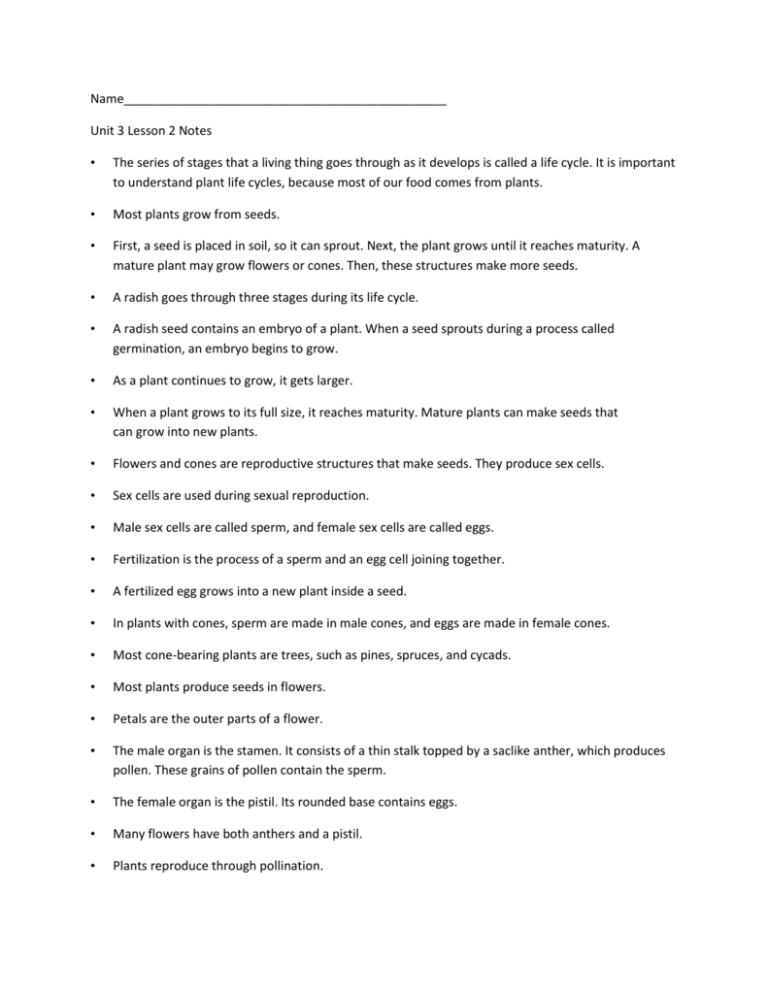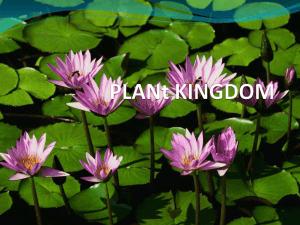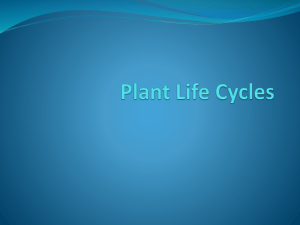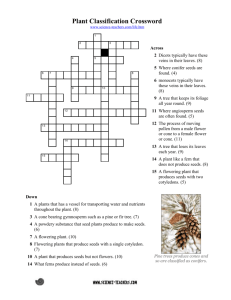Name_______________________________________________
advertisement

Name_______________________________________________ Unit 3 Lesson 2 Notes • The series of stages that a living thing goes through as it develops is called a life cycle. It is important to understand plant life cycles, because most of our food comes from plants. • Most plants grow from seeds. • First, a seed is placed in soil, so it can sprout. Next, the plant grows until it reaches maturity. A mature plant may grow flowers or cones. Then, these structures make more seeds. • A radish goes through three stages during its life cycle. • A radish seed contains an embryo of a plant. When a seed sprouts during a process called germination, an embryo begins to grow. • As a plant continues to grow, it gets larger. • When a plant grows to its full size, it reaches maturity. Mature plants can make seeds that can grow into new plants. • Flowers and cones are reproductive structures that make seeds. They produce sex cells. • Sex cells are used during sexual reproduction. • Male sex cells are called sperm, and female sex cells are called eggs. • Fertilization is the process of a sperm and an egg cell joining together. • A fertilized egg grows into a new plant inside a seed. • In plants with cones, sperm are made in male cones, and eggs are made in female cones. • Most cone-bearing plants are trees, such as pines, spruces, and cycads. • Most plants produce seeds in flowers. • Petals are the outer parts of a flower. • The male organ is the stamen. It consists of a thin stalk topped by a saclike anther, which produces pollen. These grains of pollen contain the sperm. • The female organ is the pistil. Its rounded base contains eggs. • Many flowers have both anthers and a pistil. • Plants reproduce through pollination. • Pollination is the process of pollen moving from a male plant part to a female plant part. • Plants can be pollinated by wind, flowing water, or pollinators, such as bees, birds, and butterflies. • Animals play a big role in moving plant seeds. • Many animals eat fruit, which helps spread the seeds contained in the fruit. • Other animals, such as squirrels, will find and bury seeds. • Seeds, such as burs, can also travel on an animal’s body. • Wind and flowing water also move seeds. • A spore is a cell that can form into a new plant when the conditions are right. • Some plants, such as mosses and ferns, grow from spores instead of seeds. • Plants that grow from spores have two distinct forms in their life cycles. Spores are released when the structures that hold them break open. Wind carries the spore to a new spot. If the spot is good, the spore will grow into a plant. • A fern, or frond, is one form of the plant. Spore clusters will grow on the underside of the fronds. • If a spore lands in a place with good light and water, it begins to grow into a tiny, flat, heart-shaped structure. • The heart-shaped structure is the other form of the plant. It produces eggs and sperm. • If a sperm cell fertilizes an egg cell, a curled frond will begin to develop and push out of the ground. • The new plant reaches maturity when it can reproduce.







